The Sagrada Família, Antoni Gaudí’s unfinished masterpiece, is one of Barcelona’s most popular tourist attractions. Construction on this church will continue for at least another decade, but it has already become Barcelona’s most important landmark.
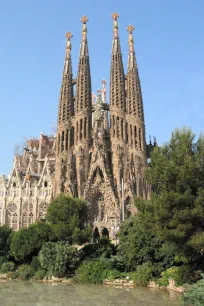
A New Church
The idea for the construction of a new church was launched by a devout organization whose goal was to bring an end to the de-Christianization of the Barcelonans, which had started with the industrialization and was caused by the increasing level of education of the Catalan population. The organization purchased a plot of land in the new Eixample district in 1877. The architect Francisco de Paula del Villar designed a Neo-Gothic church and led the construction, which started in 1882.
Antoni Gaudí’s Design
One year later, the modernist architect Antoni Gaudí took over as lead architect at the age of thirty-one. From that moment on, Gaudí devoted most of his life to the construction of the church.
Instead of sticking to the original plans, Gaudí changed the design drastically. The Neo-Gothic style made way for Gaudí’s trademark modernist style, which was based on forms found in nature. When he died in 1926 only one facade (the Nativity Facade), one tower, the apse and the crypt were finished.
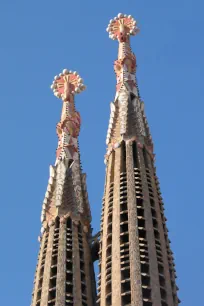
Because Gaudí was constantly improvising and changing the design while construction was going on, he left few designs and models. And most of these were destroyed in 1936 during the Civil War.
Eighteen Towers
Still, architects now have a clear idea of what Gaudí had in mind. The last version of his design called for a church 95 meters / 312 feet long and 60 meters / 197 feet wide. The church will be able to accommodate some thirteen thousand people. When finished, the Sagrada Família will have a total of eighteen towers.
Four towers on each of the three facades represent the twelve apostles. The towers reach a height of 90 to 120 meters (394 feet). Another four towers represent the four evangelists. They will surround the largest, 170-m. / 558 ft.-tall tower, dedicated to Jesus Christ. The last tower, dedicated to Virgin Mary, will be built over the apse.
Construction
After Gaudí’s death in 1926 construction slowed dramatically due to a lack of funds and the outbreak of the Civil War. Construction pace started to pick up again in the mid 1950s, and now two facades and eight towers have been completed. The main nave was roofed in 2000. At that time construction was expected to last for another hundred years, but modern technology has enabled architects to speed up construction so that the Sagrada Família is now slated for completion in 2026, the centenary of Gaudí’s death.
Facades
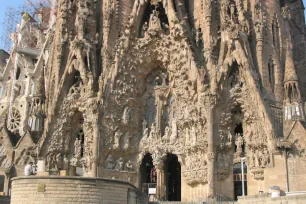
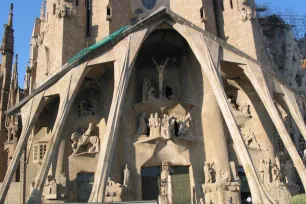
The first facade, facing east, is known as the Nativity Facade. It was finished by Gaudí himself and is ornamented in a Baroque fashion with motifs of animals and plants.
Opposite the Nativity Facade is the Passion Facade. Construction started in 1954, but only in 1987 sculptures depicting the crucified Jesus Christ were added. As soon as they were installed, the abstract figures caused a storm of criticism, as the style was very different from Gaudí’s.
The third and main facade is the Glory Facade. Construction of this facade – the most monumental of the three – started in 2002 and is still ongoing. This facade, on the south side of the church, will picture life and death.
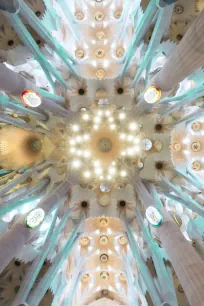
Visiting Sagrada Família
Even though the Sagrada Família is far from finished, the remarkable church is well worth a visit. You can visit the crypt where Gaudí is buried, as well as the transept and central nave with its giant, tree-like pillars and spectacular vaulting. A museum narrates the history of the church and tells the story of its great architect.
You can also visit the towers. An elevator and a long walk will lead you to the top of a tower, from where you have a magnificent view over Barcelona. The climb is not recommended for those with fear of heights or for people with claustrophobia!
- Next: Parc Güell
- More Sights & Attractions in Barcelona
